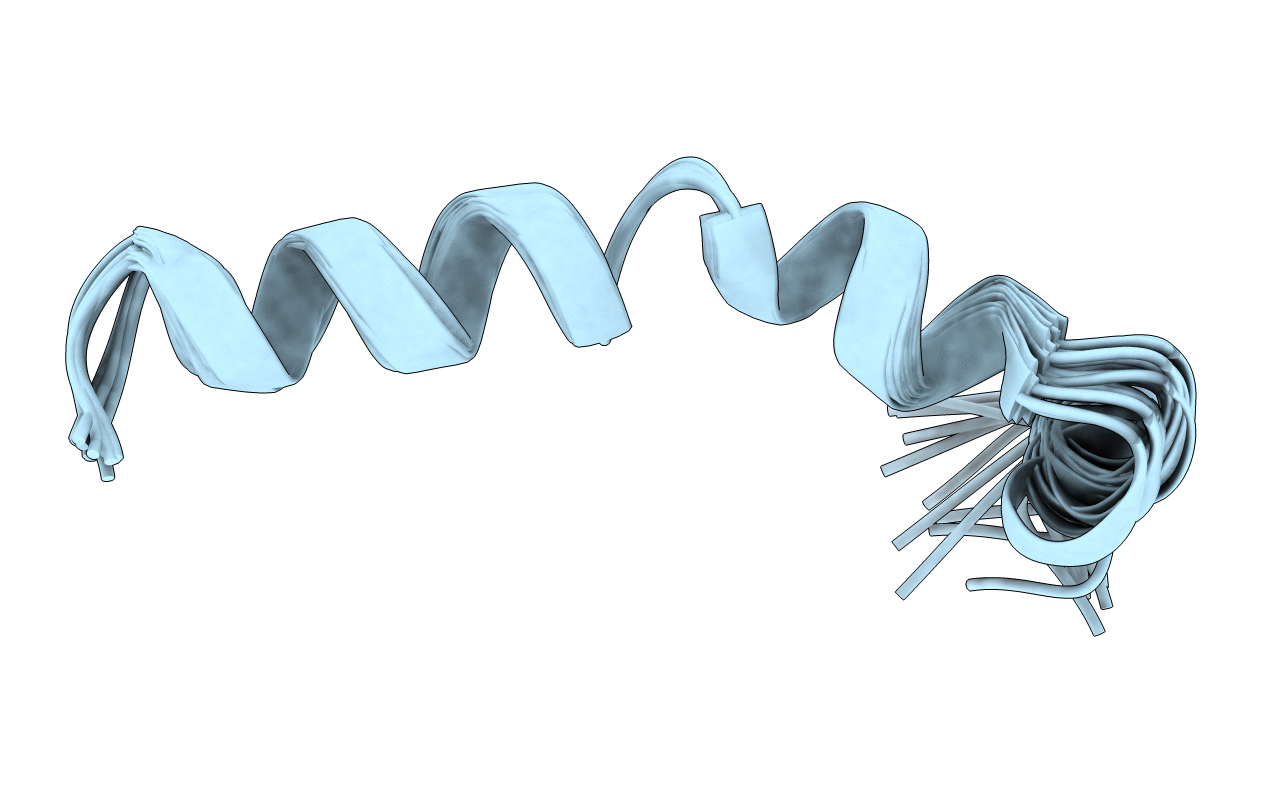
Deposition Date
2020-07-15
Release Date
2021-07-21
Last Version Date
2024-05-15
Entry Detail
PDB ID:
7CK5
Keywords:
Title:
Solution structure of 28 amino acid polypeptide (354-381) in Plantago asiatica mosaic virus replicase bound to SDS micelle
Biological Source:
Source Organism:
Plantago asiatica mosaic potexvirus (Taxon ID: 28354)
Host Organism:
Method Details:
Experimental Method:
Conformers Calculated:
100
Conformers Submitted:
20
Selection Criteria:
structures with the lowest energy


